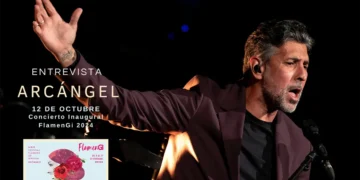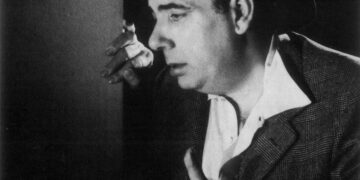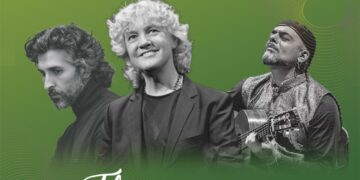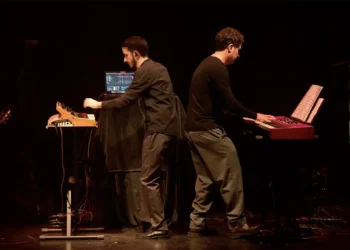|
XII ENCUENTROS FLAMENCOS |
|
Text and Photos: Antonio Conde We all know that culture, like so many other things, is going through hard times. And flamenco even more so; something which should be an obigatory subject at all levels of education, and continues to be stuck in the most absurd rut of anonymity. When on a Saturday night, in downtown Granada, packed with people, the Isabel la Católica theater doesn’t fill up for the singer Arcángel, it’s because there is no culture, or rather, the football culture is seriously hurting the genre. In addition, Pepe Habichuela was accompanying young Tamara Escudero in one of the city’s flamenco clubs. Two events, without a doubt, that stole the spotlight from the presentation of Arcángel’s latest show. No more than half the seats were filled, but those present were flamenco fans who were treated to a recital in the traditional vein with stylized avant-garde elements. Arcángel, one of the renovators of flamenco, like it or not, adapted the old and made it new, without breaking with tradition. His musicality and melismatic register combine perfectly with the retro nature of cante. A classical repertoire in every sense of the word, from the caña to the soleá apolá, from the malagueña of Mellizo to La Trini, and a subtle abandolao ending with aromas of the Albaicín, all the while seated on a flamenco cajón. The musical arrangements by Miguel Ángel Cortés and Dani Méndez were outstanding. Two different approaches to guitar. Two similar but distinctly different concepts, two ways of melding notes. While Cortés maintained the basic ambience of the pieces, Méndez toyed with the tempos and silences, all to the rhythm of tangos, between Granada and Extremadura, with a wealth of rhythmic variation. Winks to Enrique Morente were constant throughout the night. The late singer who was nicknamed “El Ronco del Albaicín” (the hoarse one from Albaicín) made fast siguiriyas fashionable, searching for a tempo that could be applied to dance, molding the cante to the speed, without sacrificing depth. Arcángel followed the same route, with the compás marked by Antonio Coronel, all the way to “Santiago y Santa Ana”. Once again, solea, this time with Dani Méndez on guitar, and with classic Arcángel verses. And the guitar shined brightly again for mining cante, with both guitarists taking turns in the variations, sewing notes together in magnificent juxtaposition. At that point, Arcángel had the audience in his pocket. The name “Morente” was sewn onto the front of his vest, with grafitti on the back, and he got into bulerías with modern verses and social content mixed with classic cuplé like “La Bien Pagá”. In years to come, in addition to speaking of Pericón’s alegrías, or Aurelio’s or Manolo Vargás’, they’ll mention Arcángel’s. He’s been cultivating the form since his earliest recordings: a classical musical body, and a different way of developing the cante. Los fandangos de Huelva (dedicated to Morente’s family) paved the way for an innovative experience in cante. A foot pedal, with which the singer recorded himself keeping compás in systematic repetition, was the musical support for the kind of “toná” Morente had us accustomed to, ending with “La Salvaora” and “La Niña del Fuego” with a brief fiesta finale that was lacking precisely that: the fiesta. |


























